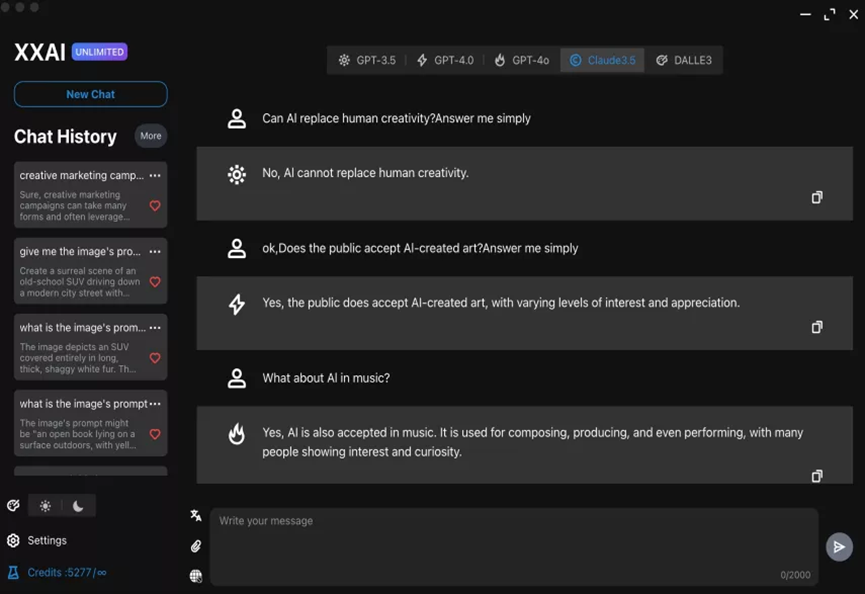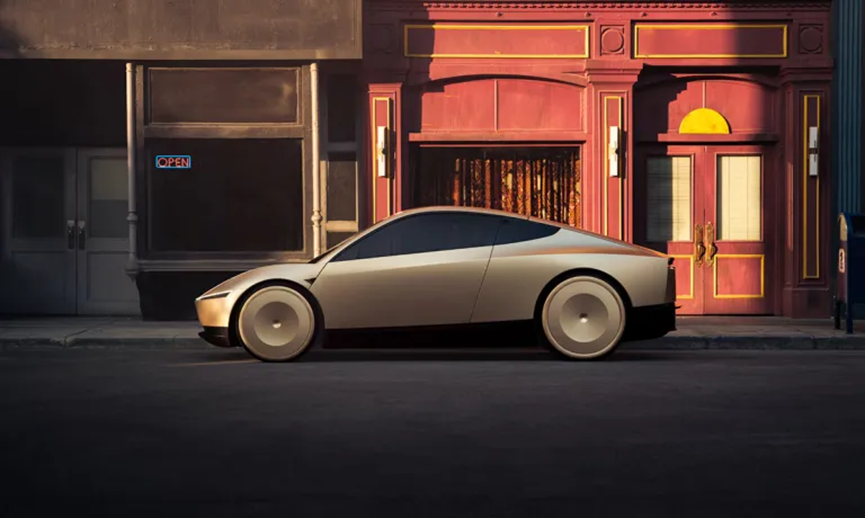Tesla Unveils Cybercab: A Leap Toward an Autonomous Future

Tesla’s long-anticipated **Cybercab**, known as the Robotaxi, has officially been unveiled by CEO Elon Musk during the spectacular event entitled “We, Robot.” Slated for production by 2027, the **Cybercab** aims to reshape urban transportation with a compelling price point of under \$30,000 and an operating cost of just \$0.40 per mile. However, as Tesla endeavors to usher in an era of driverless **Cybercabs**, the company faces significant challenges, including perfecting the technology, navigating complex regulations, and building the infrastructure necessary for charging and maintenance. (https://x.com/i/status/1844573295510728857)
In the rapidly evolving landscape of artificial intelligence, **XXAI** is emerging as a pivotal player. Integrating top-tier models such as GPT-4, DALL.E3, and Claude 3.5, XXAI offers users access to powerful AI capabilities at a monthly starting price of just \$9.9. This approach enables a wider audience to experience the charm of advanced AI, showcasing its formidable strengths in writing, image generation, translation, and more, thereby injecting innovative power across various industries.

Technological and Regulatory Challenges
Despite the excitement surrounding the **Cybercab** launch, there remain substantial hurdles to overcome. Tesla faces the challenge of refining its technology, ensuring compliance with regulatory standards, and developing the necessary infrastructure for charging and maintenance. Industry experts express skepticism regarding Tesla's ambitious timeline and the readiness of its technology. James Bore, director of Bores Group, raised a critical point about the **Cybercab**’s regulatory prospects, stating, “There seems to be nothing transformative or different about the Tesla **Cybercab**—except that it lacks manual controls, so it’s not legal on the road in most parts of the world.”
Industry Impact and Potential Changes
Nonetheless, many experts believe that the introduction of Tesla’s **Cybercab** and the Robovan could fundamentally disrupt the transportation and logistics sectors. Their autonomous capabilities and low operating costs have the potential to revolutionize last-mile delivery and ride-hailing services. “These vehicles claim they will decrease congestion and reduce the use of parking facilities by providing a more affordable means of transportation,” commented Andrew Franks, co-founder of Reclaim247.
Additionally, these **Cybercabs** may assist individuals unable to drive, such as the elderly and disabled, in managing day-to-day activities. This shift may also influence personal vehicle ownership, leading more people to opt for ride-hailing services rather than purchasing their own cars, thereby promoting a cleaner environment through decreased emissions.
Futuristic Design Meets Practicality
The **Cybercab** represents a striking departure from Tesla’s existing lineup. Unlike the stainless steel Cybertruck, the **Cybercab** features painted aluminum body panels to reduce production costs. Its futuristic aesthetic includes front and rear light bars reminiscent of the Cybertruck, while most notably, the absence of a steering wheel and pedals highlights its fully autonomous nature.
Inside, the **Cybercab** accommodates two adults with spacious, padded seats and a minimalist design. A 20.5-inch center display dominates the dashboard, providing trip information and entertainment options for passengers, while its butterfly doors add a dramatic flair—albeit with some concerns raised about maintenance and cold-weather functionality.
On the technology front, Musk announced that the **Cybercab** will be equipped with an advanced artificial intelligence (AI) system. This next-generation autonomous driving platform enhances Tesla’s existing technology, employing a camera layout similar to the company’s AI4 system, but with increased computing power. Tesla claims its AI is trained to handle a plethora of driving scenarios.

Ambitious Claims and Industry Skepticism
During the unveiling, one of the bold claims made was that vehicles like the **Cybercab** would be 10 to 30 times safer than human-driven ones. However, the projected price of under \$30,000 raised eyebrows in the industry. Tesla plans to make the **Cybercab** available for both individual consumers and fleet operators. Additionally, the concept of “Cybercab Hubs” was introduced—facilities designed for the charging and cleaning of these vehicles, featuring inductive charging and robotic cleaning systems.
Bore pointed out that Tesla's technological challenges are significant compared to established competitors who have accumulated data demonstrating their vehicles' safety and effectiveness. Unlike Tesla, many of these competing services still retain manual controls and often deploy remote safety drivers in autonomous vehicles to take over in case of failure.
New Models and Additional Innovations
The event also showcased the Robovan, a larger autonomous vehicle capable of transporting up to 20 passengers or adapted for goods transport. Sharing the **Cybercab**’s futuristic design, the Robovan could be repurposed as a school bus or RV, further broadening Tesla’s reach into the transportation sector.
In addition to vehicular innovations, Tesla introduced its Optimus humanoid robot, which attendees interacted with at the event. The robots displayed basic mobility and served drinks, hinting at their future potential as autonomous assistants for household tasks or even companions, with projected costs ranging between \$20,000 and \$30,000.
(https://x.com/i/status/1844582394239533433)
Conclusion
As production is set to commence no later than 2027, Tesla is certainly setting ambitious targets. With a critical eye on technology refinement and regulatory navigation, all eyes will be on Elon Musk and his team as they strive to turn this visionary concept into reality. With the stakes high and the promise of transformation looming, the future of urban transportation in the form of the **Cybercab** may be just around the corner.